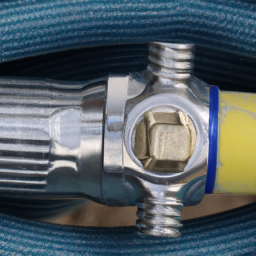Garden Hose Fitting What Size
What Size Is A Garden Hose Fitting
What Size Is A Garden Hose Fitting: Overview
Garden hose fittings are essential components of any gardening or landscaping project. Regardless of whether your project involves watering a garden, cleaning a house, or washing down a vehicle, the size of your garden hose fitting can mean the difference between success and failure. In this article, we will take a look at the key aspects of garden hose sizing - from historical trends to practical methods of measurement - to help you choose the right fitting for your next project.
History of Garden Hose Fittings
Garden hoses and the corresponding fittings have been around for centuries. In fact, the history of hoses and fittings stretches back to ancient Greece, when lead pipes used for multiple purposes such as agricultural irrigation and plumbing. During the Industrial Revolution, advances in machining and manufacturing technology made it possible to produce hoses and fittings with precise and consistent measurements. Today, hoses and fittings come in a variety of sizes, materials, and lengths to meet the needs of customers.
Sizing Options
Garden hose fittings come in a variety of sizes, ranging from inch to 3 inches. While the larger sizes are typically used for industrial applications, the most commonly used sizes are inch, inch, and inch. These sizes are typically used for residential and commercial gardening purposes and are typically compatible with most standard faucets and valves.
Measuring Garden Hose Fittings
There are several methods for determining the size of your garden hose fitting. The most common method is to measure the diameter of the fitting using a ruler or calipers. Additionally, the inside diameter of the fitting can be measured using a tape measure. It is important to note that the measurements should include the circumference of the fitting, as this will give you an accurate representation of the size.
Understanding Width and Length
In addition to diameter, it is important to understand the width and length of your garden hose fitting. The width of the fitting is determined by the distance between the two sides, while the length is determined by the distance between the two ends. Additionally, the length of the hose itself should be considered when determining the size of the fitting, as hose lengths can vary from a few feet to several hundred feet.
Common Thread Types For Garden Hose Fittings
Understanding the different thread types is important when selecting the right garden hose fitting. The most common thread types are National Standard Free-Fitting American (NPT), National Pipe Tapered (NPT), British Standard Pipe Thread (BSPT), and British Standard Pipe Tapered (BSPT). Each thread type is designed for a specific purpose, such as joining two hoses together or connecting them to a tap. It is important to note that these thread types are not interchangeable, so it is important to select the correct one for your application.
GHT vs. NPT
In addition to the common thread types mentioned above, there are also two other commonly used types of threading: Garden Hose Thread (GHT) and National Pipe Thread (NPT). GHT is commonly used for smaller hoses and is easier to thread than NPT. On the other hand, NPT is commonly used for larger hoses and requires more precision when threading. It is important to note that GHT fittings are not interchangeable with NPT fittings.
Closing Remarks
Before embarking on a project that requires a garden hose fitting, it is important to understand the various size options and thread types. By carefully measuring the diameter and width of the fitting, as well as understanding the different thread types, you can select the right fitting for your project. Once the proper fitting is selected, you can ensure that your project will be completed without any issues.

Previous Page
Next Page
